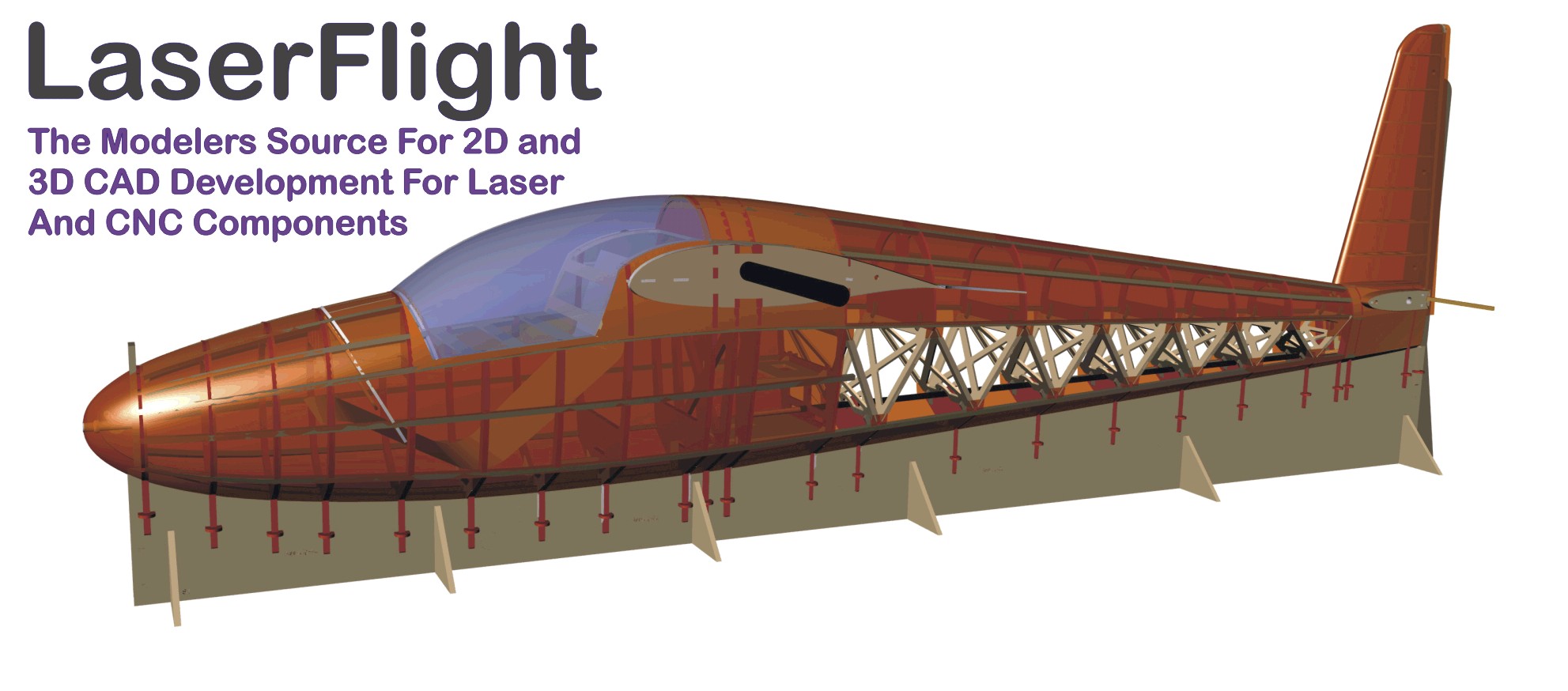|
|
|
|
|
|
|
Plans Scanning - A "How To" Page! All paper plans that are to be traced by the laserflight team initially need to be converted to an electronic format so that firstly, it can be sent to us via our servers and secondly, we can import it to CAD for tracing. Laser and CNC cutting services require part outlines to be in a "vector" format, that is, a series of drawn lines with a defined width (typically less than 0.003"), start points and end points. A scanned plan is not a vector format electronic file but a bitmap file - like a photograph. If you look very closely at a scanned image you will see a large number of "pixels" of various shades in the grayscale range from white to black (assuming you have not scanned in color). The laserflight team will import these plan bitmaps into our CAD platform and electronically "trace" down the center of a pixelated line defining a component on the plan. We do this for all components you need from the plan - ribs, formers, bulheads, gear mounts, chines, etc. File Formats: The scanned files MUST be bitmap files (.BMP or .JPG formats), NOT PDF files. We often receive PDF files because many office stores prefer this file format because of its small size. If you send us a PDF file we will contact you and direct you to this page for more information on file formats. Please, make sure you request a bitmap format of the file in either .JPG (preferred) or .BMP (much larger file size than .jpg).
The Two Methods of Sending Us Part Plans Yes, two methods! There are two ways you can prepare the plans for sending. Method 1: The first is the straight forward scan, zip and load your existing plans to our servers. We will charge you based on the size and number of plan pages you send us. Method 2: the second method requires a little work on your part but can yield you a lower overall conversion cost. Most plans have two "components" to them - parts and assembly drawings (like fuse side views, wing planforms in the case of an airplane). These items we do not trace but they do add to your page count and therefore cost of tracing. An alternative method is to create plan sheets that ONLY contain parts and no assembly drawings. Here's what you should do if you would like : 1). take your plans to Staples, Kinko's, Office Depot or a similar location and make a copy of your plan(s) pages that have part drawings on them. 2). cut out the parts from these copies (leaving the part outline intact) and tape them to a clean sheet of paper the size of your existing plan. You don't need to cut out every part individually, you can have "blocks" of parts on one cutout to simplify the "patchwork" process. You may need to request a sheet or two of large format paper from Staples, Kinko's or Office Depot if you don't have any at hand. Try to lay the part cutouts in the same orientation as the original plan. Pack the parts fairly tightly and use the invisible Scotch tape to attach them to the clean sheet. 3). Once you have finished patching the parts on to the sheet(s), take this “patchwork” sheet or sheets to the Office Superstore that has the large format scanner and have them scan the newly assembled page(s). Since the density of artwork has increased, you will likely need a fairly large memory stick to get it home. We recommend a 2GB stick or larger depending on how many sheets you have and how dense the graphics are on the page. Preparing The Scanned Pages To Send Once you have the files on your memory stick go ahead and copy them to a folder on your computers hard drive. This will speed up the following processes a little. Next, please compress the files using a commercially available "zipping" program. If you are a Windows PC user, Microsoft includes a ZIP function as part of the Windows operating system. Just use that and zip the files to the smallest possible size. Please zip each bitmap plans page into it's own zipped file - this will keep the file sizes smaller. Once the plans are ready to send, go to the 2D Plans Tracing and Parts Service page, enter the page size, the quantity of pages you are sending, your contact information and use the file upload boxes to point to the file locations on your hard disk drive on your computer and upload the files to our servers. |
© Copyright 2007-2010, www.LaserFlight.com. All rights reserved.
